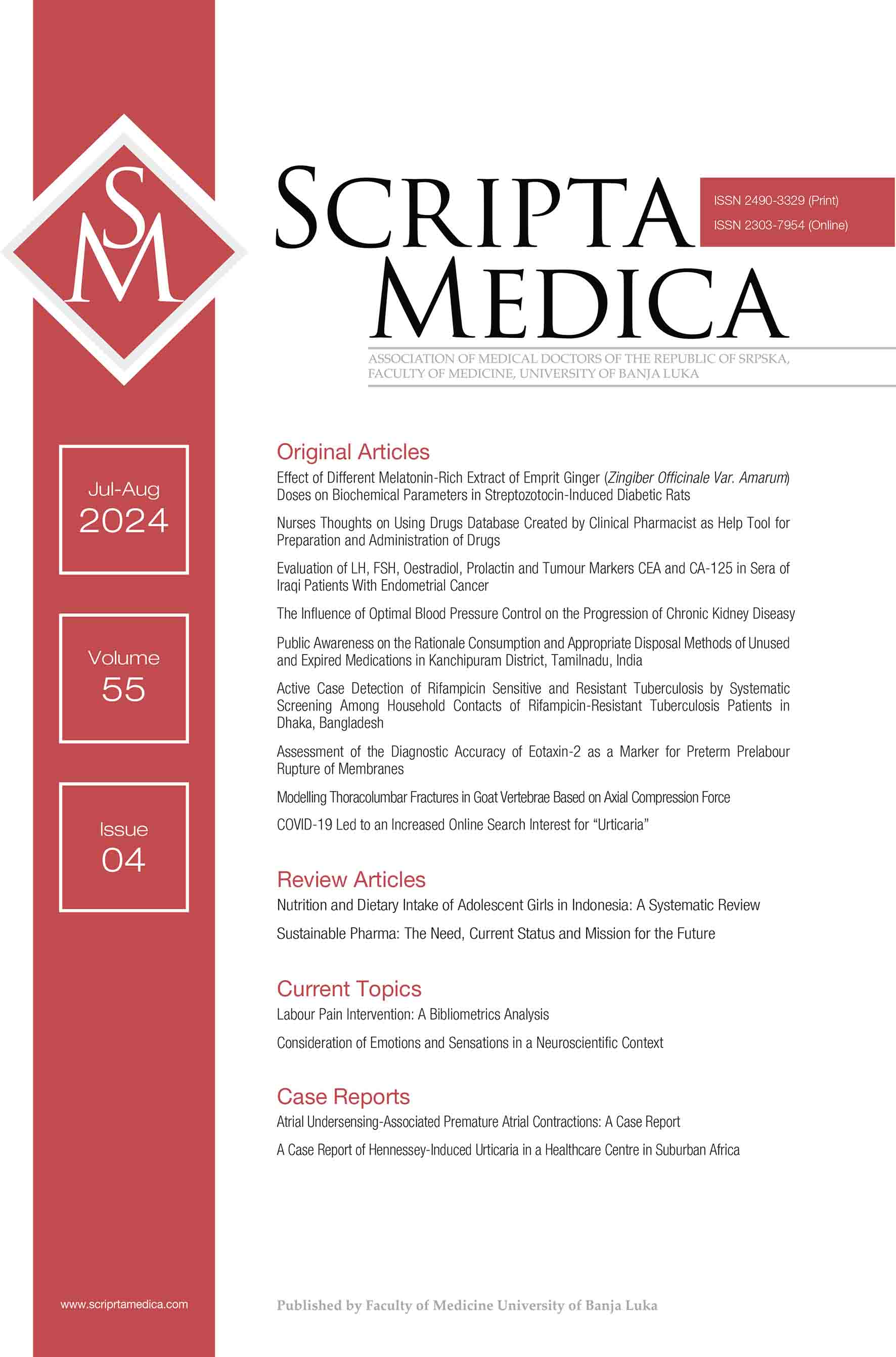Consideration of Emotions and Sensations in a Neuroscientific Context
Abstract
Understanding emotions and sensations from a neuroscientific context is essential for unravelling the complex mechanisms underlying human behaviour and cognition. Emotions are created by maintaining a positive or negative relationship of an individual towards the experiences and facts of reality. Sensations are the result of the influence of the material world on our senses or receptors. Recent advancements in neuroimaging techniques, such as functional magnetic resonance imaging (fMRI) and electroencephalography (EEG) have provided unprecedented insights into the neural circuitry underlying emotions and sensations. Additionally the role of neurotransmitters, neural networks and brain regions are implicated in emotion regulation, sensory processing and their integration. Furthermore, there is impact of emotional and sensory dysregulation on various psychiatric disorders, including anxiety, depression and post-traumatic stress disorder (PTSD), highlighting potential avenues for therapeutic interventions. Overall, the importance of interdisciplinary research is in bridging the gap between neuroscience and psychology, paving the way for a deeper understanding of human emotions and sensations which is reflected in both simple experiences is emphasised.
References
Milivojević Z. [Emotions: psychotherapy and understanding emotions]. 4ed. Novi Sad: Psihopolis institut; 2016. Serbian.
Inman CS, Bijanki KR, Bass DI, Gross RE, Hamann S, Willie JT. Human amygdala stimulation effects on emotion physiology and emotional experience. Neuropsychologia. 2020;145:106722. doi: 10.1016/j.neuropsychologia.2018.03.019.
Šimić G, Tkalčić M, Vukić V, Mulc D, Španić E, Šagud M, et al. Understanding emotions: origins and roles of the amygdala. Biomolecules. 2021;11(6):823. doi: 10.3390/biom11060823.
Goldstein EB. Sensation and Perception. 10th ed. Boston, MA: Cengage Learning; 2017.
van den Boogert F, Klein K, Spaan P, Sizoo B, Bouman YHA, Hoogendijk WJG, Roza SJ. Sensory processing difficulties in psychiatric disorders: A meta-analysis. J Psychiatr Res. 2022;151:173-80. doi: 10.1016/j.jpsychires.2022.04.020.
Casey BJ, Heller AS, Gee DG, Cohen AO. Development of the emotional brain. Neurosci Lett. 2019;693:29–34. doi: 10.1016/j.neulet.2017.11.055.
Izard CE. Emotion theory and research: highlights, unanswered questions, and emerging issues. Annu Rev Psychol. 2009;60:1-25. doi: 10.1146/annurev.psych.60.110707.163539.
Goodkind M, Eickhoff SB, Oathes DJ, Jiang Y, Chang A, Jones-Hagata LB, Ortega BN, et al. Dysregulation of emotion-sensation in psychiatry. Am J Psychiatry. 2015;172(11): 1075-84.
Nicholson AA, Rabellino D, Densmore M, Frewen PA, Paret C, Kluetsch R, Schmahl C, et al. The neurobiology of emotion regulation in posttraumatic stress disorder: Amygdala downregulation via real-time fMRI neurofeedback. Hum Brain Mapp. 2017;38(1):541-60. doi: 10.1002/hbm.23402.
Seah TH, Coifman KG. Emotion differentiation and behavioral dysregulation in clinical and nonclinical samples: A meta-analysis. Emotion. 2022;22(7):1686–97. doi: 10.1037/emo0000968.
Bradley B, DeFife JA, Guarnaccia C, Phifer J, Fani N, Ressler KJ, et al. Emotion dysregulation and negative affect: Association with psychiatric symptoms. JCP. 2011;72(5):6427. doi: 10.4088/JCP.10m06409blu.
Rodriguez M, Kross E. Sensory emotion regulation. Trends Cogn Sci. 2023;27(4):379-90. doi: 10.1016/j.tics.2023.01.008.
Goldstein EB. Sensation and perception. 10th ed. Belmont, CA: Wadsworth Cengage Learning; 2017.
Katherine Vytal, Stephan Hamann; Neuroimaging support for discrete neural correlates of basic emotions: a voxel-based meta-analysis. J Cogn Neurosci. 2010;22(12):2864–85. doi: 10.1162/jocn.2009.21366.
McGlone, F., Wessberg J, Olausson H. Discriminative and affective touch: sensing and feeling. Neuron. 2014;82(4):737-55. doi: 10.1016/j.neuron.2014.05.001.
Alinejad D, Olivieri D. Affect, emotions, and feelings. The Sage Handbook Media Migr. 2020;64-73.
Livneh Y, Andermann ML. Cellular activity in insular cortex across seconds to hours: Sensations and predictions of bodily states. Neuron. 2021;109(22):3576-93. doi: 10.1016/j.neuron.2021.08.036.
Grindrod P, Brennan M. Cognition and consciousness entwined. Brain Sci. 2023;13(6):872. doi: 10.3390/brainsci13060872.
Ramos OS. Emotions and senses: experience, practice and sensory networks. Emot Soc. 2023;5(2):147-64. doi: 10.1332/263168922X16718156204334.
Apkarian AV, Bushnell MC, Treede RD, Zubieta JK. Human brain mechanisms of pain perception and regulation in health and disease. Eur J Pain. 2005;9(4):463-84. doi: 10.1016/j.ejpain.2004.11.001.
Speed LJ, Majid A. Grounding language in the neglected senses of touch, taste, and smell. Cog Neuropsycol. 2020;37(5-6):363-92. doi: 10.1080/02643294.2019.1623188.
Etkin A, Büchel C, Gross JJ. The neural bases of emotion regulation. Nature Rev Neurosci. 2015;16(11):693-700. doi: 10.1038/nrn4044.
Linzarini A, Houdé O, Borst G. Cognitive control outside of conscious awareness. Conscious Cogn. 2017;53:185-93. doi: 10.1016/j.concog.2017.06.014.
Boddice R, Smith M. Emotion, sense, experience. Cambridge, England: Cambridge University Press; 2020.
Green DR. Truth in sight: the effect of physical cues on emotion [Honors theses]. 2015;1963-2015. [Cited: 1-Mar-2024]. Available from: https://digitalcommons.csbsju.edu/honors_theses/64.
Cheţan A, Iancu I. The role of visual identity in music perception: a talk with specialists on song likability, perceived quality and emotional reactions. KOME. 2023;11(1):110-28. doi: 10.17646/KOME.75672.94.
Pelowski M, Specker E, Gerger G, Leder H, Weingarden LS. Do you feel like I do? A study of spontaneous and deliberate emotion sharing and understanding between artists and perceivers of installation art. Psychol Aesthet Creat Arts. 2020;14(3):276. doi: 10.1037/aca0000201.
Leblanc É, Dégeilh F, Daneault V, Beauchamp MH, Bernier A. attachment security in infancy: a preliminary study of prospective links to brain morphometry in late childhood. Front Psychol. 2017;12;8:2141. doi: 10.3389/fpsyg.2017.02141.
Celeghin A, Diano M, Bagnis A, Viola M, Tamietto M. Basic emotions in human neuroscience: neuroimaging and beyond. Front Psychol. 2017;8:1432. doi: 10.3389/fpsyg.2017.01432.
Johnson MK. Joy: A review of the literature and suggestions for future directions. J Posit Psychol. 2020;15(1):5-24. doi: 10.1080/17439760.2019.1685581.
Gross JJ. Emotion regulation: current status and future prospects. Psychol Inq. 2015;26:1-26. doi: 10.1080/1047840X.2014.940781.
- Authors retain copyright and grant the journal right of first publication with the work simultaneously licensed under a Creative Commons Attribution License that allows others to share the work with an acknowledgement of the work's authorship and initial publication in this journal.
- Authors are able to enter into separate, additional contractual arrangements for the non-exclusive distribution of the journal's published version of the work (e.g., post it to an institutional repository or publish it in a book), with an acknowledgement of its initial publication in this journal.
- Authors are permitted and encouraged to post their work online (e.g., in institutional repositories or on their website) prior to and during the submission process, as it can lead to productive exchanges, as well as earlier and greater citation of published work (See The Effect of Open Access).

